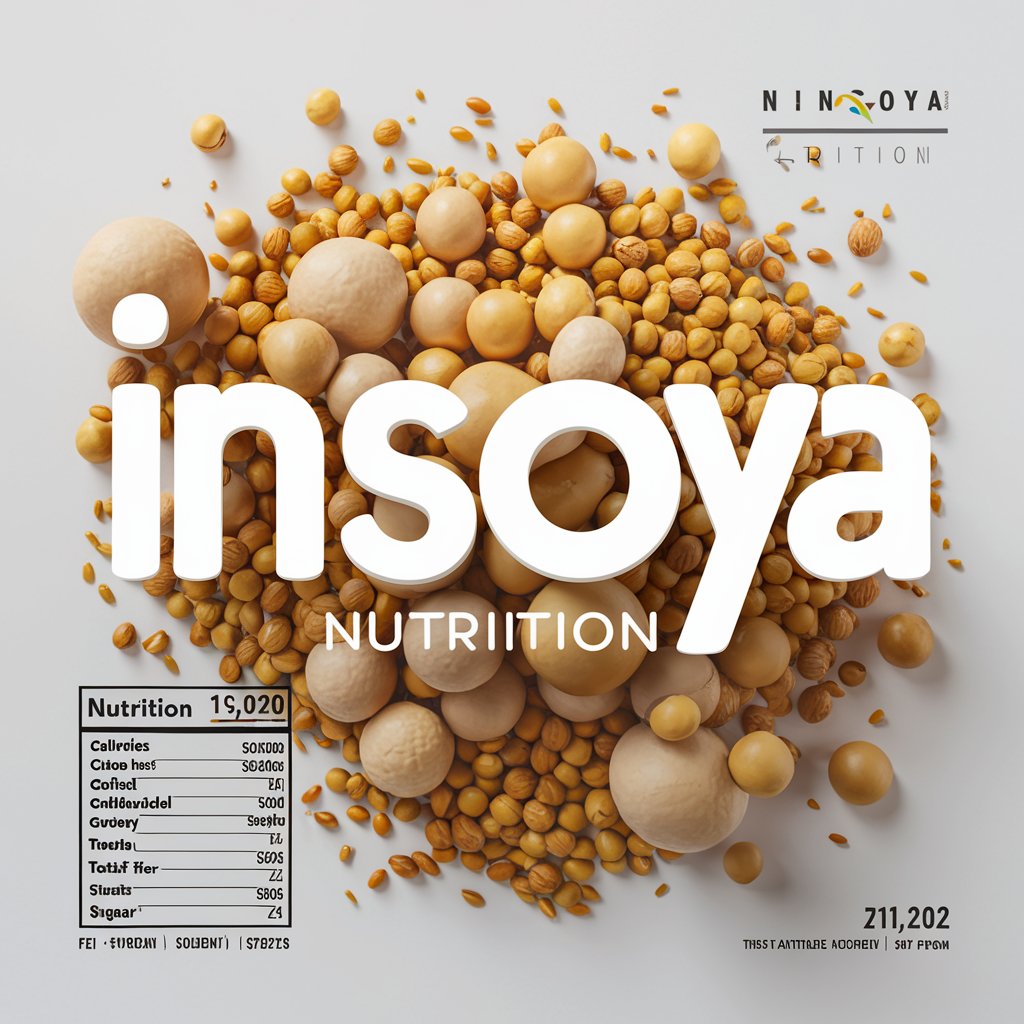The global shift toward healthier, plant-based eating has created space for new ingredients and products that combine nutrition, sustainability, and convenience. One of the names increasingly appearing in this landscape is Insoya. Rooted in soy, a food already celebrated for its protein and versatility, Insoya builds on innovation to deliver improved taste, easier digestion, and broader applications for modern consumers. Whether you are a health enthusiast, a vegan, or simply someone seeking alternatives to traditional protein sources, Insoya is worth exploring. This article provides an in-depth look at what Insoya is, how it differs from traditional soy products, its nutritional profile, health benefits, cooking uses, and its environmental impact. By the end, you will have a clearer understanding of whether Insoya deserves a place in your kitchen and lifestyle.
What is Insoya?
Insoya is generally described as a next-generation soy product designed to improve on the taste, texture, and nutritional benefits of conventional soy foods like tofu, tempeh, or soy milk. While traditional soy often carries a strong “bean” flavor and requires preparation or seasoning to be palatable, Insoya is engineered to be milder and more adaptable in recipes. It is commonly available as protein powder, textured soy protein, or ready-to-use food products. Many brands promoting Insoya highlight features such as non-GMO sourcing, eco-friendly farming, cleaner processing methods, and nutrient preservation, making it stand out as a premium choice among plant-based foods. In essence, Insoya seeks to deliver all the benefits of soy while overcoming some of its limitations.
Nutritional Value of Insoya
Like soy, Insoya is prized for its high protein content, making it an excellent substitute for meat and dairy proteins. Depending on the form, a single serving can provide up to 20 grams of protein, often with all essential amino acids, qualifying it as a complete plant protein. It is also naturally low in saturated fats and contains no cholesterol, which supports cardiovascular health. Many Insoya products are fortified with calcium, iron, and B-vitamins, ensuring they serve as more than just a protein boost. Additionally, the presence of dietary fiber aids digestion, while isoflavones, plant compounds unique to soy, have been linked to bone health, menopausal relief, and overall hormonal balance. For athletes, vegans, and those monitoring cholesterol, Insoya offers a compact nutritional package that fits seamlessly into daily life.
Health Benefits of Insoya
The health benefits of Insoya mirror much of what soy is already known for, with improvements in digestibility and taste:
-
Supports Muscle Growth and Recovery: As a complete protein, Insoya helps build and repair muscle, making it ideal for athletes and fitness enthusiasts.
-
Heart Health: By replacing saturated animal proteins with soy-based protein, cholesterol levels and cardiovascular risks can be reduced.
-
Weight Management: High protein and fiber create a sense of fullness, reducing unnecessary snacking and supporting sustainable weight control.
-
Bone Strength: Isoflavones and calcium (in fortified versions) contribute to bone density, which is particularly beneficial for aging populations.
-
Hormonal Balance: While often debated, moderate soy intake may support women experiencing menopause by easing symptoms like hot flashes.
It is important to note that individuals with soy allergies must avoid Insoya, and those with specific health conditions should consult a medical professional before making it a staple.
Insoya vs Traditional Soy Products
Many people wonder how Insoya compares with traditional soy items they already know. The main differences come down to refinement, usability, and consumer experience. Traditional soy foods often require preparation: tofu may need pressing, tempeh benefits from marinating, and soy milk sometimes retains a distinct flavor. Insoya products, however, are designed for ease and neutrality—they blend smoothly into smoothies, mix easily in baked goods, or cook quickly in savory meals. From a nutritional perspective, both offer strong protein and health benefits, but Insoya is marketed as a more convenient, modern option that aligns with fast-paced lifestyles while addressing taste concerns.
How to Use Insoya in Cooking
Cooking with Insoya opens a wide range of possibilities:
-
Smoothies and Shakes: Insoya powder can be blended with fruits, greens, and plant milks for a protein-rich breakfast or post-workout shake.
-
Baking: Substitute part of the flour in bread, muffins, or pancakes with Insoya powder to increase protein without changing flavor dramatically.
-
Main Dishes: Textured Insoya works well in chili, tacos, stir-fries, and curries as a replacement for minced meat.
-
Soups and Sauces: Add Insoya powder or paste into soups for a nutritional boost or to thicken sauces.
-
Snacks: Protein bars and energy bites can be enriched with Insoya for lasting energy.
Its versatility ensures that even those who dislike the strong flavor of soy can find appealing ways to incorporate it into daily meals.
Sustainability and Environmental Impact
As sustainability becomes a priority for modern consumers, Insoya’s environmental profile is one of its major selling points. Compared to animal agriculture, soy production uses significantly less land, water, and emits fewer greenhouse gases. Brands using the Insoya label often highlight their use of non-GMO soy, regenerative farming practices, reduced water usage, and eco-friendly packaging. However, soy farming has been criticized in regions where deforestation occurs to make room for large plantations. The responsibility, therefore, lies with both producers and consumers to support Insoya brands that ensure ethical and environmentally responsible sourcing. Choosing Insoya carefully can make it not only a health-positive choice but also a step toward reducing your environmental footprint.
Conclusion
Insoya represents a fresh chapter in plant-based nutrition. By combining the proven benefits of soy with modern food technology, it offers a product that is nutritious, versatile, and potentially more sustainable than many animal-based proteins. Whether you are looking to improve your diet, adopt a vegan lifestyle, or simply diversify your protein sources, Insoya has the potential to fit into your health and ethical goals. While care should be taken for those with allergies or sensitivities, for most people Insoya provides a balanced, eco-friendly, and forward-thinking food choice. As plant-based living continues to grow, Insoya could well become a household name in 2025 and beyond.
Frequently Asked Questions (FAQ)
Q1: What exactly is Insoya?
A1: Insoya is a modern soy-based food product designed to improve upon traditional soy foods with better taste, easier preparation, and a strong nutritional profile. It is often available as protein powder, textured soy, or ready-to-use products.
Q2: Is Insoya good for vegans and vegetarians?
A2: Yes. As a soy-based product, Insoya is entirely plant-derived and provides complete protein, making it especially valuable in vegan and vegetarian diets.
Q3: Can Insoya replace meat in my diet?
A3: In many cases, yes. Textured Insoya can be used in recipes such as burgers, tacos, and stir-fries, offering protein and texture similar to ground meat when seasoned well.
Q4: Are there any side effects of consuming Insoya?
A4: Most people tolerate it well, but individuals with soy allergies must avoid it. Some may experience digestive discomfort if they consume large amounts suddenly. Always start gradually and consult a doctor if unsure.
Q5: How does Insoya differ from tofu or soy milk?
A5: Tofu and soy milk are traditional soy foods, often requiring preparation and having a distinct flavor. Insoya is refined to be more neutral in taste, easier to use in varied recipes, and sometimes more nutrient-focused.
Q6: Is Insoya environmentally sustainable?
A6: Compared to animal protein, Insoya is far more sustainable. Its exact impact depends on how the soy is farmed and sourced, but many brands emphasize eco-friendly and ethical practices.


